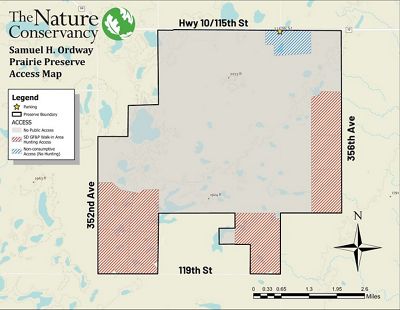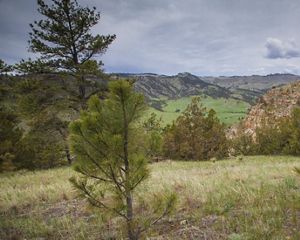Description
Why You Should Visit
The grasslands of the Great Plains once covered one-fifth of North America. Ordway represents a fraction of what remains after the west was settled. Visitors are reminded of the history of the Great Plains through the numerous granite boulders and potholes that are evidence of the area's glacial past. Indigenous history is recalled by teepee rings, and settlements of pioneers are remembered in the ruins of an old homestead.
Ordway Prairie lies at the southern end of large untilled landscape consisting of over 135,000 acres that extends into North Dakota. Within that landscape, many properties are managed by conservation partners such as Ducks Unlimited, South Dakota Game Fish and Parks and the Fish and Wildlife Service.
A weather station was installed at Ordway Prairie in 2007 as part of the U.S. Climate Reference Network. This network of climate stations is designed to track the nation’s temperature and precipitation trends. In exchange for basic maintenance, TNC gets access to the real-time weather data, which is useful because much of our work is dependent on, or affected by, the weather, such as prescribed fire, weed control and monitoring.
Why TNC Selected This Site
Most of the preserve has never been plowed and has been managed with a good rotational grazing system. The area contained a very diverse mix of prairie plants, which was the original scientific interest. The aquatic communities were also of interest to TNC. Ordway Prairie is the largest preserve owned and managed by The Nature Conservancy in South Dakota. The landscape in which the preserve lies is threatened by conversion to agriculture, incompatible grazing practices and invasive species.





